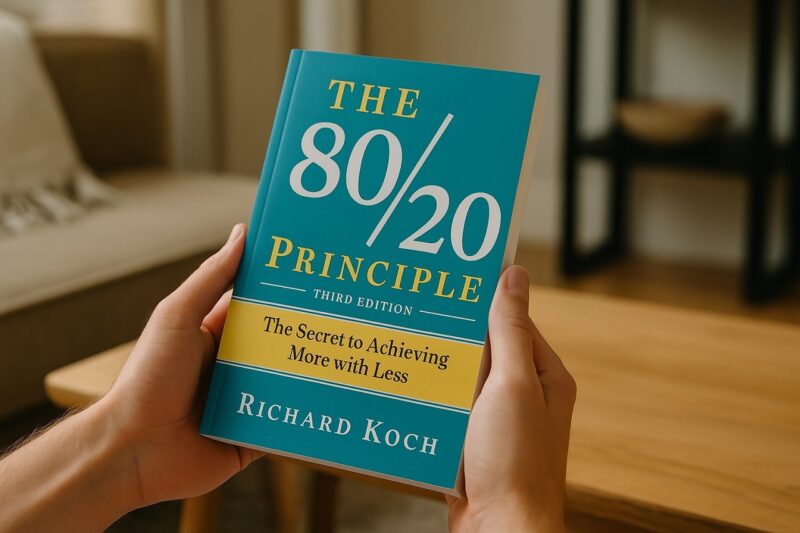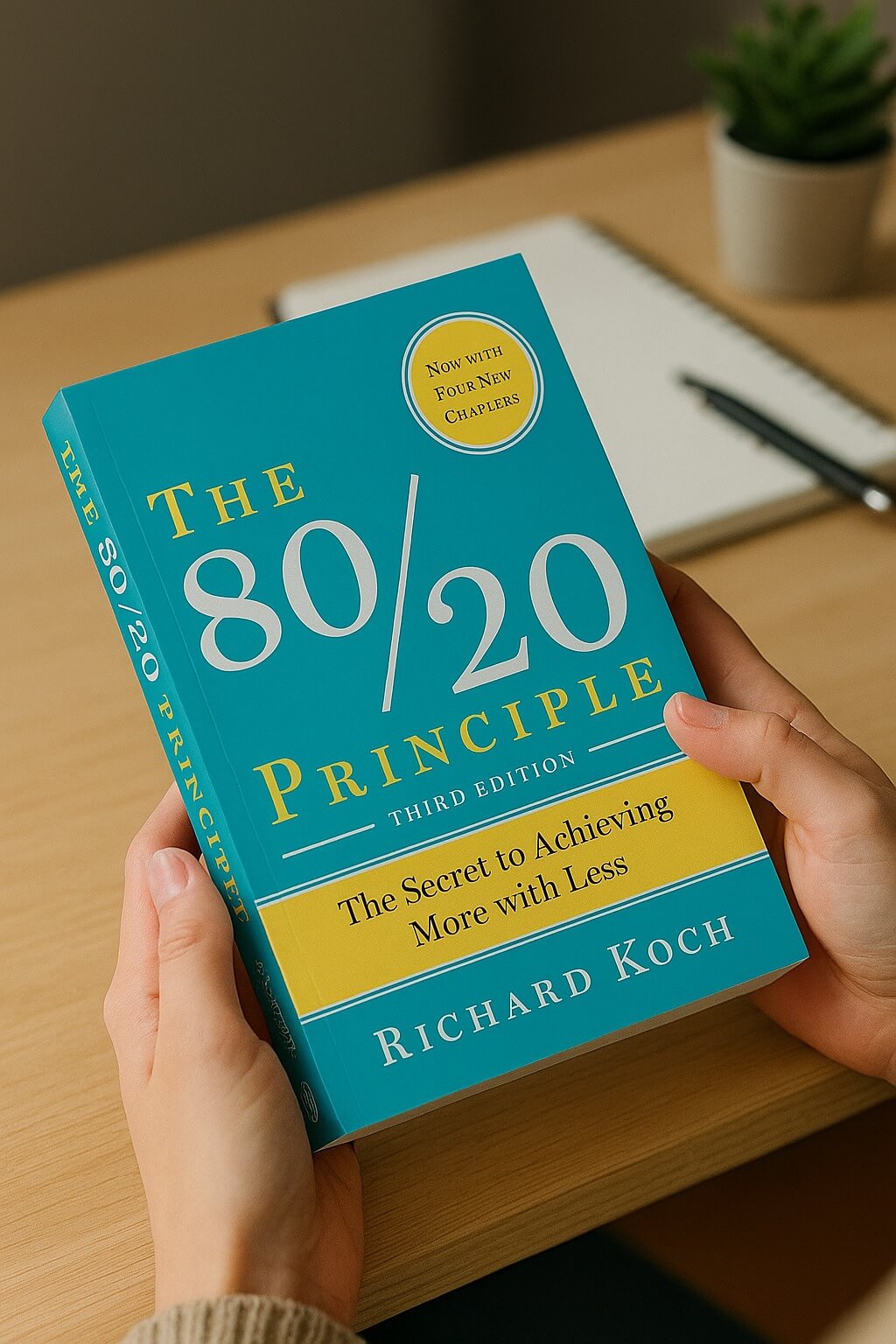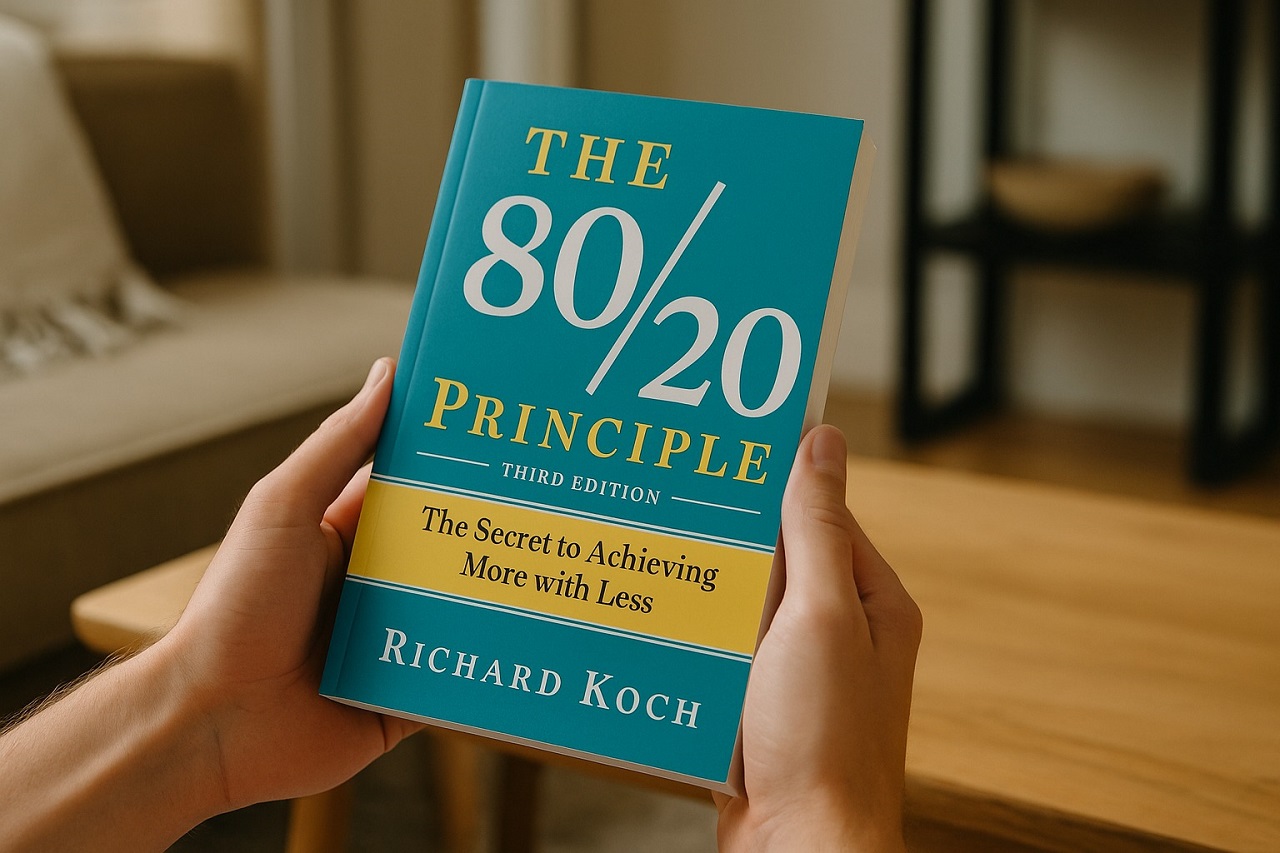
Share Post:
Richard Koch, a British entrepreneur and management consultant, has spent decades studying how people and organizations can achieve extraordinary results with minimal effort.
His bestselling book The 80/20 Principle expands on the Pareto Principle, a concept named after Italian economist Vilfredo Pareto. Pareto discovered that roughly 80% of effects come from 20% of causes.
Koch’s work applies this ratio to all areas of life, showing how small inputs often drive the majority of results. Business owners, leaders, and individuals can apply the principle to increase profits, save time, and improve overall well-being.
The core idea is simple: identify the few actions, relationships, or decisions that produce the greatest outcomes.
Success becomes less about doing more and more about focusing on what truly counts.
Table of Contents
ToggleAdvanced Applications and Societal Implications

The 80/20 principle extends into broader systems. Koch envisions applying it to public policy, technology, and social structures to increase collective efficiency.
Policymakers could allocate funds toward programs with the highest impact instead of spreading resources evenly.
In the digital world, the rule manifests naturally. A minority of users generate most of the engagement, content, and influence online.
Businesses that understand this can use targeted strategies to reach the most influential individuals and maximize results.
Organizations such as www.fdcapital.co.uk demonstrate modern use of Pareto thinking by aligning strategy, recruitment, and finance toward the areas delivering the most value.
Applying data-driven prioritization enables these companies to achieve exceptional outcomes with fewer wasted resources.
Part One: The 80/20 Principle

Thinking in 80/20 terms requires a complete shift in perspective. Many people grow up believing that effort and reward share a linear relationship, but Richard Koch’s findings prove that such a balance rarely exists.
Imbalance governs nearly every part of life, with most accomplishments stemming from a few concentrated efforts, while the remainder adds minimal value.
Recognizing this uneven distribution becomes the essential first step toward achieving higher effectiveness and clarity.
Applying the 80/20 mindset means observing patterns of output and discovering where energy produces the greatest return. Instead of chasing balance or equality, success comes from precision and focus.
Koch emphasizes that identifying the few impactful efforts creates breakthroughs in work, income, and personal satisfaction.
A major obstacle lies in overcoming the psychological belief that hard work alone determines success. Society often teaches people to equate busyness with progress, but such behavior can trap individuals in cycles of low productivity.
Letting go of the “equal effort” mentality allows for redirection of attention toward areas of genuine impact.
To make the principle actionable, Koch highlights several ways to recognize and apply the concept effectively:
- Examine daily routines to identify tasks producing the greatest results.
- Track where time, energy, and money go, then cut out low-return activities.
- Replace multitasking with focused bursts of effort on a few high-value goals.
- Recognize which relationships, projects, or clients consistently deliver real progress.
Part Two: Applying 80/20 in Business
Business performance consistently mirrors the 80/20 principle.
Around 80% of revenue often originates from 20% of customers, products, or channels.
Smart entrepreneurs recognize these high-value sources and dedicate energy to expanding them rather than diluting focus on underperforming areas.
Companies that fail to adapt often waste resources chasing the wrong priorities.
To illustrate how the concept reshapes business decisions, Koch provides practical examples such as:
- Redirecting marketing budgets to channels with the highest ROI.
- Cutting or simplifying product lines that deliver low profits.
- Focusing sales teams on nurturing top-tier clients.
- Streamlining operations by identifying bottlenecks that consume time without improving outcomes.
Leadership and Management

Strong leadership thrives on 80/20 thinking. Great leaders dedicate their time to activities that create the most influence, build trust, and increase profitability.
Instead of attempting to control every detail, they concentrate on strategic direction and cultural development.
Delegation becomes a central tool for efficiency. When leaders empower teams to handle operational tasks, they gain freedom to focus on innovation and growth.
Koch explains that every hour spent by leadership should advance key objectives. High-leverage leaders amplify results by making fewer, smarter decisions.
Key takeaways for effective 80/20 leadership include:
- Identify leadership actions with the highest impact on performance and morale.
- Delegate routine or administrative duties to trusted team members.
- Foster autonomy by allowing others to take ownership of projects.
- Focus meetings on outcomes, not processes.
Productivity and Simplification

Complexity often hides inefficiency. Koch argues that simplification drives long-term success. Businesses waste valuable time optimizing tasks that bring little benefit.
Instead of refining every detail, leaders should eliminate non-essential processes. Fewer moving parts lead to faster decisions and cleaner execution.
Data becomes an essential compass in maintaining focus.
Managers should regularly analyze which activities drive real results and which only create activity without purpose.
A business that continuously measures performance against results stays aligned with 80/20 priorities.
Helpful steps for simplifying business operations include:
- Conduct quarterly reviews to identify redundant or outdated procedures.
- Analyze which customers, services, or operations bring the highest profit margins.
- Reduce decision-making layers for faster execution.
- Reinvest resources saved through simplification into innovation and customer experience.
Part Three: Applying 80/20 in Personal Life
Personal success flourishes under the same principle.
Instead of spreading energy across countless activities, focus should remain on the few actions that produce most progress.
Koch advocates a “time revolution” where people prioritize efficiency and purpose over constant activity..
To make 80/20 thinking part of daily productivity, one can:
- List top tasks that contribute most to long-term goals.
- Eliminate or delegate repetitive, low-impact chores.
- Reserve peak energy hours for meaningful work.
- Use tools such as planners and time trackers to ensure attention stays on essential actions.
Time Management

Time represents the most valuable resource, yet many waste it unintentionally.
80/20 time management encourages identifying and protecting hours that drive the highest results. Once those windows are recognized, distractions must be minimized.
Building a daily structure around priority work can lead to freedom and satisfaction. Minor tasks or interruptions should be postponed until core objectives are complete.
Small systems such as time-blocking and morning planning can keep productivity high.
Examples of 80/20 time strategies include:
- Completing the most critical task before checking emails or messages.
- Setting clear time limits for low-priority activities.
- Using weekly reviews to refine focus and eliminate inefficiencies.
- Saying no to projects that do not serve personal or professional goals.
Relationships and Happiness

Life’s greatest fulfillment arises not from quantity but depth.
Koch explains that roughly 20% of relationships and experiences create 80% of happiness.
Investing energy in meaningful relationships delivers emotional stability and long-term satisfaction.
Building intentional relationships requires evaluating which people bring positivity and mutual growth.
Spending quality time with supportive friends, family, or partners nurtures resilience and joy.
Ways to apply the 80/20 mindset to relationships include:
- Prioritize interactions that energize rather than drain.
- Reduce time spent on relationships that lack reciprocity.
- Invest in experiences that strengthen emotional bonds.
- Reflect regularly on who or what truly brings happiness.
Summary
Richard Koch’s The 80/20 Principle remains one of the most powerful tools for maximizing efficiency and success.
Adopting this mindset brings greater control, higher satisfaction, and less stress.
Success, happiness, and productivity multiply when energy centers on what truly matters. Doing fewer things with greater intention turns ordinary effort into extraordinary achievement.
Related Posts:









